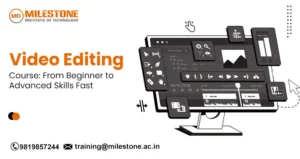
Introduction
Mechanical engineering is always a very dynamic field with the fast paced technology, professionals and learners in this field need to be on toes to keep pace with professional life and one of the most touching and relevant ways of getting there is to become proficient in industry-related mechanical engineering software with so many design, simulation, manufacturing, and analysis now reliant on software tools in 2025. There is never been a better time to think about upskilling software training for your organization.
In this article we are going to mention some of the mechanical engineering software courses which you can learn in 2025, their features, applications and where you can learn them to make a successful career into mechanical design and engineering.
Why Learn Mechanical Engineering Software?
Before finding out top courses let us have a brief idea of why is learning mechanical engineering software so important, these tools assist engineers to make complex concepts visual, simulate real-world scenarios and meaningful enhance the overall product design quality and functionalities, from automotive, aerospace, and robotics to every other platform you design, mechanical design software is used to manage, analyze, and optimize every model across the entire product life cycle.
An understanding of mechanical engineering software helps you work faster and great for students and working professionals alike to gain exposure to tools used in the industry. It paves the way for better careers perks with lucrative pay and an opportunity to work in projects that contribute to innovation.
Top Mechanical Engineering Software Courses in 2025
-
AutoCAD for Mechanical Design
- 2D and 3D mechanical drafting
- Parametric design and constraints
- BOM generation and annotation
-
SolidWorks Certification Course
- 3D part and assembly modeling
- Motion studies and simulation
- Sheet metal and surface modeling
-
ANSYS for Simulation and FEA
- Structural and thermal analysis
- Meshing techniques
- Static and dynamic simulation
-
CATIA Mechanical Design Course
- 3D component design and surface modelling
- Assembly and drafting
- Integration with PLM tools
-
PTC Creo Training Program
-
Fusion 360 by Autodesk
- 3D design and rendering
- Simulation and stress analysis
- CAM for manufacturing
-
MATLAB for Mechanical Engineers
- Programming fundamentals
- System modeling and simulation
- Data analysis and visualization
Where to Learn These Courses?
To specialize in mechanical engineering software, select an institute that provides practical training, live projects and certification. Lots of platforms provide flexible online and hybrid offerings now, but ideally you need practical guidance from experienced mentors to show you how it’s done in the real world.
Milestone Institute of Technology is one such well-known institute that offers professional training in AutoCAD, SolidWorks, ANSYS, CATIA, etc., customized for mechanical engineering students and working professionals.


